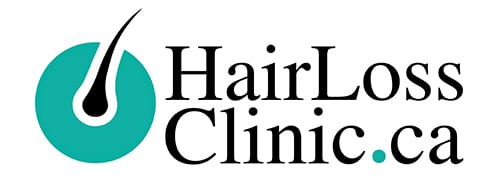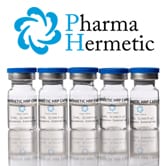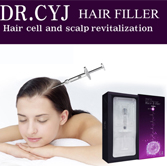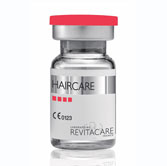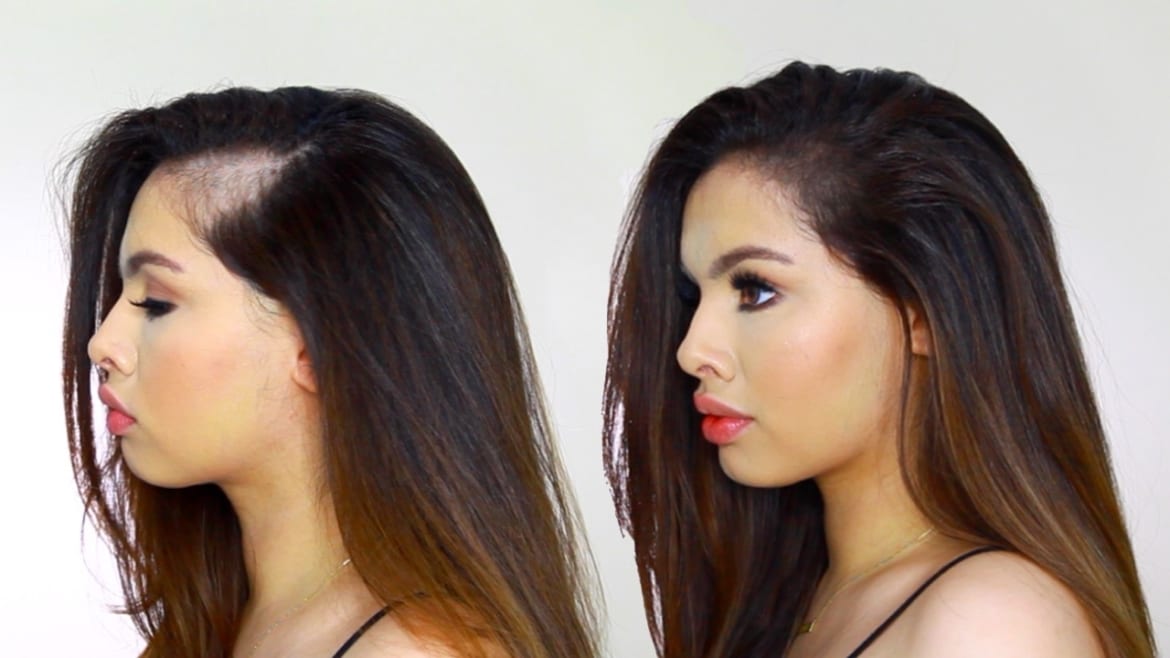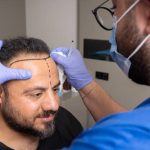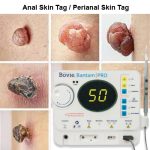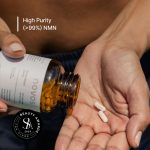HOW TO TREAT POSTPARTUM HAIR LOSS – TORONTO TRICHOLOGY CENTRE
If you have completed your pregnancy and successfully given birth, get ready for the avalanche of congratulatory messages that are bound to come your way. But even as you bask in the glory of motherhood and nursing your little bundle of joy, be prepared for the information overload on postpartum hair loss treatment that concerned friends and family will surely lob at you. Post-pregnancy reduced hair growth is a fact of life and most women experience some degree of hair loss. However, very few know how to cope with the issue and get their hair bouncing back again. Let’s look at some of the most effective ways of handling postpartum hair loss…
You can’t help noticing the hair loss after childbirth. Hair strands lying are all over the place. Wherever your eyes wander, they’re likely to see a fistful of hair – in the sink, on the bed linen, tufts of hair getting uprooted whenever you lay comb to hair. Coming immediately after the pregnancy phase when you were looking your healthiest best, it can be an extremely depressing phase. But remember, there’s no point in agonizing over a baldness cure. Especially if hormones are at work. It’s not just men who suffer from alopecia and other hair loss problems.
The science behind postpartum hair fall
Here’s what actually happens… When you’re pregnant, estrogen levels spike up in the body. This results in hair growth that’s rich, lustrous and a joy to behold. But following childbirth, the estrogen levels plummet drastically leading to unusual hair loss. Combined with this, nursing your baby can drain your body of vital minerals and nutrition. The end result is hair loss. Although most women suffer hair loss postpartum, the intensity of the problem varies from person to person. The good news is that postpartum hair loss is a purely temporary phenomenon and the condition generally reverses in as little as three months after childbirth.
During postpartum it is crucial that you maintain a diet rich in proteins and vitamins. For this, you need to consume generous quantities of eggs, dairy, fish, poultry and green leafy vegetables. Don’t forget to pop in your daily dose of omega -3, vitamin D, and hair growth vitamins too.
To get through this rough patch, here are some sure-shot ways to explore:
Out with traditional hair styles
The ponytail is usually the preferred hairstyle for hands-on motherhood. But remember that for a ponytail you have to pull back your hair tightly and tie it up, which puts additional pressure on the already delicate hair strands. Moreover, your little one’s curious fingers are most likely pulling at your hair whenever you take him or her in your arms. Under the circumstances, you can opt instead for blowout style by which your hair gains additional volume and bounce. If you find you’re short of time for an elaborate blowout, you can always give your hair the curly or wavy look. This is a perfectly simple way to gift yourself a lovely hair look.
While experimenting with bouncy styles for your hair, go slow on the layers. Include one too many a layer and you risk reducing weight from hair, giving it a weak look. The best thing would be to keep hair fuller to the back while playing with layers near the face.
Accessorize the look:
Feeling too lazy or weak to get yourself an elaborate hairdo every time you head outdoors? Simply wear a scarf near the hairline and you’re all set for the groovy look! Then there’s the headband look and the bandana look that you can try out in your postpartum phase. This is a relatively easy and economical way of glossing over hair loss problems. They also save you a lot of time.
Cut it right
Sometimes a tidy haircut is exactly what the barber would order for new moms on the block. When your hair looks straggly and weak when it’s long, simply go for a short hairstyle. Experiment with short styles such a pixie cut or a pert bob. Shorter hair will gain additional bounce and give you a fuller look.
Experiment with your haircare product range
It is quite possible that your hair looks and feels quite different in postpartum phase. Quite naturally, you’ll be tempted to try out hair growth products that are possibly more appropriate for your hair. By all means go ahead and experiment with different product ranges to see if you can hit upon the shampoo or hair care product that gives your hair the missing bounce and body you so crave.
Long-term hair loss therapies
As you have seen, there are many options to tide you through the postpartum hair loss phase. But in the event of hair not growing back to its original glory, there’s hair transplants and Platelet Rich Plasma therapy (PRP for hair loss treatment). PRP basically involves a process where some of your blood is extracted, centrifuged and thereafter injected inside your scalp. But if the prospect of having your blood drawn and centrifuged for PRP injection is not something you fancy, then you have a better alternative called Advanced Adipose-derived cell Protein Extracts (AAPE) hair care serum. AAPE is a spectacularly effective hair regeneration system that is also non-invasive in nature. With more than 500,000 satisfied clients giving it the thumbs up, AAPE is making its presence felt all over the world. AAPE makes perfect sense for those who have already undergone a PRP treatment but are not satisfied with the results.
And if you’re a resident of the Greater Toronto Area, our Hair Loss Clinics are conveniently located and easily accessible. So even if you have already taken a PRP for hair loss, you can still benefit from AAPE sessions. Hair Loss Clinic has locations in Toronto and Richmond Hill. To Book your in-office consultation, please contact us at 647-492-9093 or visit our website to book a free professional consultation here: http://hairforever.online
Comments are closed.
